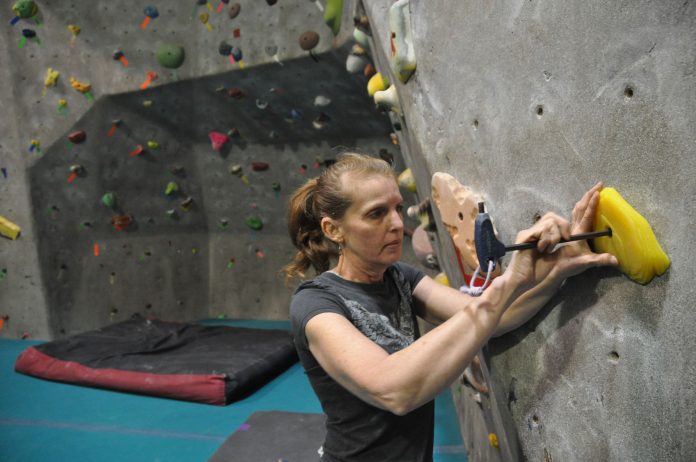Behind the Desk…is a series that interviews professionals in the climbing industry. For this Behind the Desk segment, we sit down with Lynnette Miller. Climbing since 1993, Lynnette has worn many hats over the years: athlete, coach, setter, shaper, business owner. Even if you don’t know her personally, there’s a good chance your climbing life has crossed paths or shares connections with hers in some way. In her story we find mirrors of ourselves, encouragement to keep moving, and a reminder that we all have a story to tell…and others to listen to.
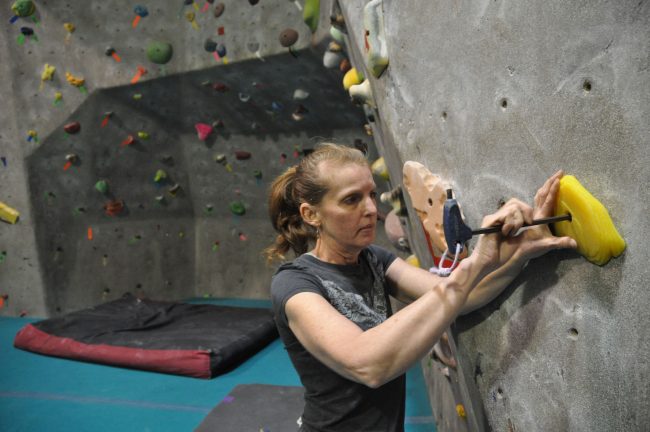
Name: Lynnette Miller
Title: Owner, Rock Gem Climbing Center and Vision Climbing
Years climbing: since 1993
JPH: How did you start climbing?
MILLER: I was an undergraduate at Carnegie Mellon University, when I experienced a collapsed lung during the winter of 1992. A few months into my recovery, my friends invited me to go climbing with them. I was hooked. For several months I only climbed on the slab wall. This was because I couldn’t lift my left arm above my head due to the stitched-up holes in between my ribs from the surgery incisions and chest tubes. In hindsight, this was a good thing. I learned to respect the importance of good footwork right from the beginning.
I became good friends with some exchange students from Switzerland who also attended CMU. They taught me so much in the beginning. I sucked it up like a sponge. I couldn’t get enough. I lived at the gym. It got so bad that the owner made me show him my grades. He basically said if my grades dropped below average, he would ban me from the gym until I got my grades up. I kept my grades up. What choice did I have? I would do anything to be able to go climb.
What outdoor areas were influential to you?
A year later, after graduation, I had the opportunity to travel the US with my friends from Switzerland for 5 months. We went everywhere. City of Rocks, Yosemite, Mt. Charleston, Rifle, Hueco Tanks, Smith Rock, Sinks Canyon, Red River, New River…and so many more amazing places. I wasn’t really into bouldering early on. So, back then, Smith Rock was my ideal crag. I gravitated toward slab, vert and slightly overhanging lines.
That all changed when I fell in love with bouldering. I saved and planned a climbing trip to France. I had to experience Fontainebleau. It was magical. The forest, the boulders, the people, the quaint towns, the food, the language, everything. I fell in love with Fontainebleau. When I reminisce, my time in France evokes some of the happiest times I have had as a climber. But to be fair, I have many, many others that really stick out too; like Squamish, Bishop and Horse Pens 40.
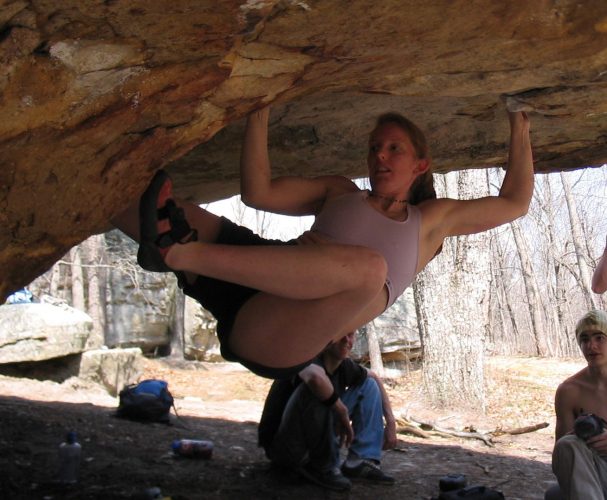
You were an early woman in climbing – how was that? Did you feel being a female in the sport was easy? Was it hard? Can you talk a little about paving the way?
Hmm this one is tough. Male climbers definitely outnumbered females. However, I was lucky in that the guys I climbed with were extremely supportive. And let’s be fair, you become a better climber if you are climbing with others that are better than you. I never really felt like I wasn’t good enough to climb with them. They were patient, supportive and encouraging.
In fact, I think I put more pressure on myself when I was climbing with other females. Since there weren’t very many female climbers, the ones that I did run into were all idols to me. I knew their names and faces and accomplishments from magazines. I found myself star struck, I guess. For the next few years I climbed next to or competed against all the big names of the day: Lynn Hill, Robyn Erbesfield-Raboutou, Mia Axon, Bobbi Bensman, Michelle Hurni, Alison Osius and Margarita Martinez. I would not have pushed myself if I didn’t have them to look up to. They inspired me, I wanted to be as good as them.
For example, I was climbing in Smith Rock, leading something a few grades above my on-sight ability and I noticed Lynn Hill dancing her way up a line right next to me. I’m hang-dogging and basically frozen just watching her in awe. She’s finessing her way up and holding a conversation with her belayer at the same time. Later that evening, while writing in my journal I had a revelation. It was a defining moment for me and my commitment to becoming a better climber; I gave myself permission to feel nervous, anxious or uncomfortable in certain situations. However, I wasn’t going to let these feelings prevent me from trying my best. I knew that mentally I was doing this to myself. That the only way I was going to get better was to push myself, believe in myself, and if it meant falling in front of my idols, so be it.
I have to give a huge shout out to Margarita Martinez and Rene Keyser-Andre. I met them in Rifle, CO in the early 90’s. They invited me to their home in Cincinnati, OH. They believed in me and supported me. They were more than a couple of climbers that coached me. If they wouldn’t have taken a chance on me, I wouldn’t be where I am today, and I wouldn’t have had the same life path, and for that I am grateful to them both.
I guess as I look back upon the past 20 plus years of my climbing it has been an amazing adventure. I worked hard to learn efficient technique. I pushed myself mentally and physically for years. Climbing has been such an integral part of my life for so long, I don’t know where I’d be without it. Travelling, meeting other climbers, coaching and so much more has helped me become the person I am today. Sharing my experiences and passion for climbing with others is beyond rewarding, it’s a blessing.
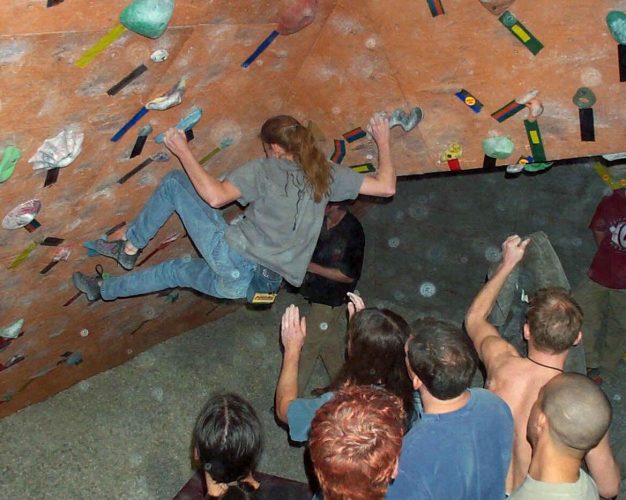
You used to train Angie Payne when she was young?
Yeah, I met Ange (I’ve always called her Ange) and her family while working at RockQuest Climbing Center in Cincinnati. I believe Angie was 11 years old when I met her. She came in with her entire family on a regular basis. Angie showed potential as a climber right away. Her persistence and determination to continuously improve was evident at a young age. I used to joke that she was my prodigy child.
Ange and her younger brother were on my junior climbing team for something like 7 years. I don’t think Angie knows this but having the opportunity to train her and climb with her made me a better climber and coach. I could go on and on about how she impacted my life. It comes down to this: I’ve been blessed to have Angie and her entire family in my life.
How and why did you start making holds?
It’s the late 90’s. I’m a climbing instructor, a sponsored athlete, a competition climber, a routesetter and a business owner. I designed and operated a portable climbing wall. It was a simple A-frame wall that could be dismantled and reassembled pretty much anywhere. My life was extremely busy, but I loved the challenge of it all. However, life catches up with you. Things present themselves that you don’t have control of. That’s what happened to me. My dad was diagnosed with Acute Lymphatic Leukemia. I tried to keep my own life in order. I had a lot on my plate. I couldn’t stop thinking about my own future and what I really wanted and how I could support myself in the long run. It was pretty logical really. I just combined the 2 things I knew a lot about: chemistry and climbing. I even had the good fortune to be living in the same city as Scott Rennak, who owned Crater at the time. Initially, he taught me a lot about the hold making process.
By 2001, my gut was telling me to go home to South Carolina to spend time with my dad. My parents live in the middle of nowhere. It takes 30 minutes in any direction to find civilization. I basically lived out of the detached garage. I turned it into my lab. I spent every day for the next several months learning the ins and outs of the entire process of hold making. I did everything from shaping, to molding, to pouring. It’s a super long process to create a hold. In hindsight, my addictive personality was a blessing. I learned a lot from friends, the internet and just talking to people in the industry. The very first hold I made was actually used in a gym in SC. I was so proud of my accomplishment. I knew this was something I wanted to pursue.
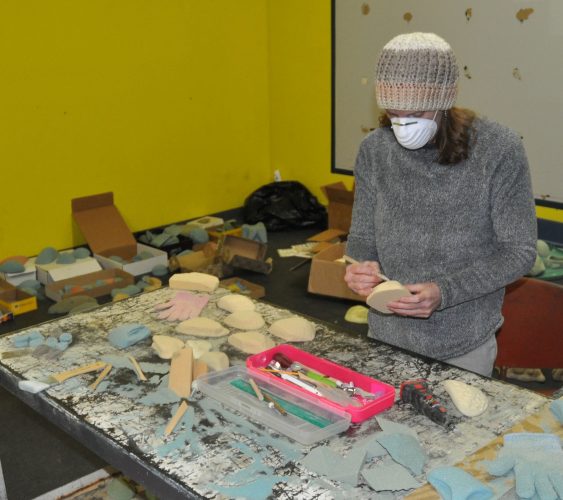
How long did you actively run Vision for? And then you let it take a backseat for a while – to run your gym?
Well, my dad passed away in June of 2001. I was lost. I felt frozen. I didn’t know what to do, where to go, or even what my next step would be. Then 9/11 happened. Originally, Vision was going to be called Mecca. It didn’t feel right so I held off getting the tradename or business officially established. A few months later, while out climbing with Angie, I had on a T-shirt that reminded me of my dad. It was a Mack Trucks shirt promoting the last truck he had worked on, it was called “Vision.” Angie suggested that I turn my shirt around so the Vision text would be on the back. And that was it, I knew at that moment that my climbing hold business was going to be “Vision Climbing.”
Although Vision Climbing was established in 2001, I decided to pursue a career as a chemist. I landed a researcher position at Procter and Gamble. Yep, I was one of the primary researchers in America who improved your Tide laundry detergent. After several years, I felt more confident in maintaining my day job and running Vision Climbing simultaneously. I really started pushing Vision Climbing around 2005. It was always just me and one other person helping me at any given time. I never really got big. It basically was just enough business to allow me to work my day job and dabble in hold making. I did this until 2015.
When/how did you start a gym?
In 2015 I had the opportunity to buy Rock Gem Climbing Center in Louisville, Kentucky. It was perfect timing for me. I had been struggling with injuries and I was extremely unhappy at P&G. I had 3 surgeries within 4 years on my neck. I had 3 discs fused. I was depressed because I couldn’t climb, I couldn’t work, I was feeling completely lost. Then the opportunity comes to own a gym. This was a dream come true. I was confident in my skills of owning and managing a climbing gym.
What has it been like running a climbing gym?
I’ve always been extremely safety oriented. Over the years, I’ve written a few employee handbooks, instructor training manuals, and maintenance protocols. So, this part of running the gym came naturally. It was things like managing the schedule, dealing with employees’ performance, paying the bills, marketing and staying on top of taxes that caused me the most anxiety. I had no choice, I just plowed through and learned as I went. Everything gets easier the more you deal with it. Within a few months of owning the gym, I was on autopilot. I took care of whatever was the highest priority of the day. I never had time to do anything else, but I knew that going into this business. I’m pretty sure other gym owners would agree that owning a gym does not guarantee that you will be able to climb whenever you want. In fact, I was climbing less and less. Fitting in a climbing session was difficult. Initially, I couldn’t really concentrate. I was too busy helping an employee, answering the phone, making a reservation, or answering customers’ questions. However, it was still worth it. I just had to figure out how to find time just for me. Basically, I had a lot of impromptu climbing sessions whenever I could fit them in.
The part I love the most is working with a new or intermediate climber and seeing how they improve over time. Making sure my programs were available to anyone of any ability was a priority. I’m constantly trying to improve on how I share my knowledge. I find little ways to emphasize how to do a certain movement. In order to be a good teacher, you need to be able to adapt to the person and adjust how you explain things. I can see when a climber is off balance, I can dissect each individual movement in slow motion and explain it to my students in a way they can understand. I try to always compare efficient climbing moves with the inefficient. This way the climber feels the difference.
For example, I’ll take a new climber to the 45-degree wall and have them try to climb without twisting. I make them get on the wall and do a move with each knee pointed outward, I call it a frog position. Obviously, this is extremely difficult. But then I show them how to drop-knee, twist and reach. I even throw in a little wave in there to show them how I can hold the move. Now I have them try the drop-knee. It never fails. They surprise themselves by doing the move with ease compared to the frog move. They seem to really get the importance of finding the most efficient ways to do each move and how, through the course of the route, it all adds up.
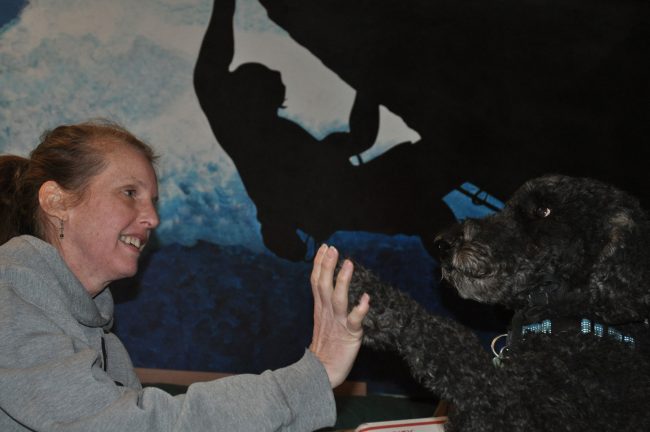
What was the beginning of the Covid shutdown like for you as a business?
I knew about the virus in late January. I was constantly having my employees wipe everything down. Prior to the CDC recommendations, I had customers wash hands before and after climbing. So, by mid-March, I had had time to digest the severity of this virus and the impact it would have on the world. My predictions, as cryptic and horrifying as they were, were coming true day after day. I diligently watched the Governor’s daily briefings, internally hoping he would mandate the closure of gyms. Once he did, I was relieved. The emotional toll of so many unknowns really got in my head.
After a few weeks of isolation, I was ready to get back to work. I used the closure to do maintenance work. I washed pretty much every hold in the gym and I fixed over 1500 t-nuts. After that I knew I had to figure out how to survive. That’s when I switched gears and started focusing on Vision Climbing.
You were one of the founders of the Home Wall Forum on Facebook. Since the pandemic it has exploded as a useful place for people looking to build home walls. What has that been like for you?
Yeah, James Mobley and I started the forum for climbers who were interested in building their own home walls. As the owner of a small hold business, I figured it could be a win-win for Vision Climbing as well as the individual home wall owner. We had several thousand members pre-Covid, but yes, it has exploded. It is amazing how everyone works together to encourage and inspire new members. You can see the gratitude members have for such a page. They show off their walls with pride. They aren’t intimidated to ask questions. Members with knowledge consistently guide the newbie in the right direction. The site manages itself for the most part. This platform really has evolved into a plethora of information: a platform that has years of information that is readily available for anyone to use. Yeah, it gives me a sense of pride knowing James and I are a part of something so special.
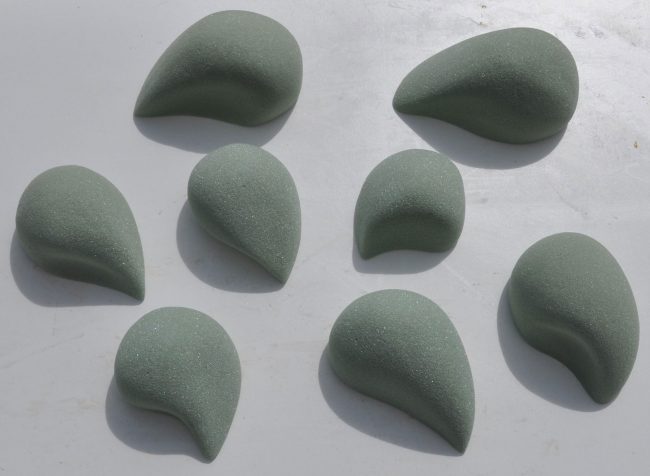
What are your plans going forward?
Honestly, I don’t know how or when I will open the gym back up. I wish it could be like it was pre-covid. I’m pretty sure we all have a lot to learn about “the new normal.” Maybe I’ll sell the gym. Maybe I’ll open up gradually. Right now, I’m just trying to figure out what’s around the bend.
In the meantime, I’m focusing 100% on Vision Climbing. There are certain aspects of the hold business that I am really good at and some I am not. It’s me and one very part-timer. This can be overwhelming at times. However, I love the challenge of finding ways to improve the process. I’m proud of some of the innovative things I’ve done. Every step in the process of making holds is time consuming. Each step needs to be perfect. So attention to detail is a must. Each step relies on the previous step’s success. It’s all worth it though when I hold the final product in my hand, when I see someone climb on the hold and when I get positive feedback from my customers. There is no doubt, I am proud of Vision Climbing.
Anything else you want to talk about?
I want to say thank you for this opportunity. We all have a story to tell. Covid-19 has touched us all in different ways. For example, I text or call people I haven’t talked to in years just to say “hello, how are you?” I worry, like everyone, what the future holds. Where will I be in 3 months, 6 months, a year? I don’t know. So, thank you for letting me tell people who I am, what I have done, where I am at now and where I want to go.
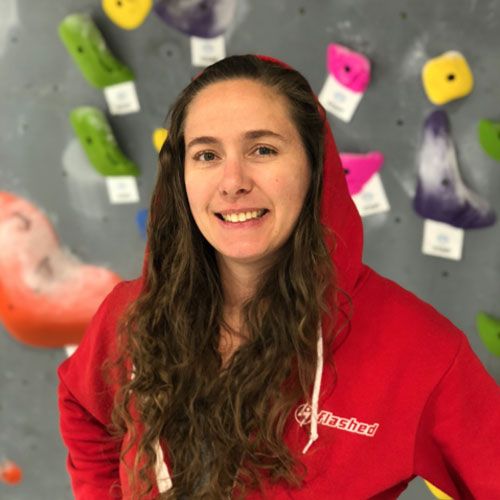
Jackie Hueftle is a founding member of the CWA Routesetting Committee and the Routesetting Institute. She has been setting since 1998, is USAC Nationally-certified Level 4, was Head Setter at The Spot, and is co-owner at Kilter Grips. In addition to Kilter she consults, teaches and sets for gyms and comps and contributes writing to national and international magazines.
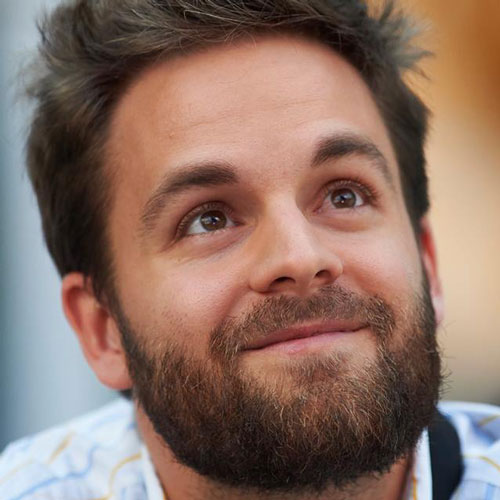 Joe Robinson has been working in the climbing industry for over a decade and currently manages CBJ advertising and editorial. He traveled the world as the IFSC’s community manager during Olympic inclusion and across the US while writing for Alpinist, Climberism, DPM and CBJ. He also worked in local climbing gyms of the Pacific Northwest and West Michigan while advancing economic empowerment, educational equity, youth development and diversity programs of national non-profit organizations.
Joe Robinson has been working in the climbing industry for over a decade and currently manages CBJ advertising and editorial. He traveled the world as the IFSC’s community manager during Olympic inclusion and across the US while writing for Alpinist, Climberism, DPM and CBJ. He also worked in local climbing gyms of the Pacific Northwest and West Michigan while advancing economic empowerment, educational equity, youth development and diversity programs of national non-profit organizations.



